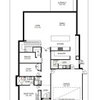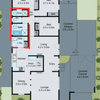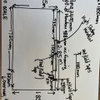Sealing under the baseplate of a timber frame
I was finalising a contract to build a timber frame house but my chosen builder (with almost 50 years experience) had a pretty serious accident and is no longer working while he recovers so I have needed to find another builder.
Prior to the accident, we were discussing the construction of the outer wall and the builder told me the baseplate would be fixed directly to the edge of the slab. I had been researching airtightness at the time and told him about a passive house video on YouTube where the builder placed the baseplate on a rubber gasket and sealed both sides with silicone that way air cannot pass under the baseplate. My builder could not find an equivalent rubber product here so he suggested beads of silicone on the slab just before the baseplate is lowered into position. That sounded reasonable to me.
I have found a new builder (with 25 years experience) who insists that it is standard practice to put a flashing that sits under the baseplate and down the front of the slab. Is that true? He claims that it somehow prevents moisture ingress, gives extra protection for white ants and prevents air exchange.
I can understand how silicone or rubber filling any imperfections in the timber and concrete surfaces would provide an air seal but how can a layer of metal do the things the second builder claims?




Comments (3)